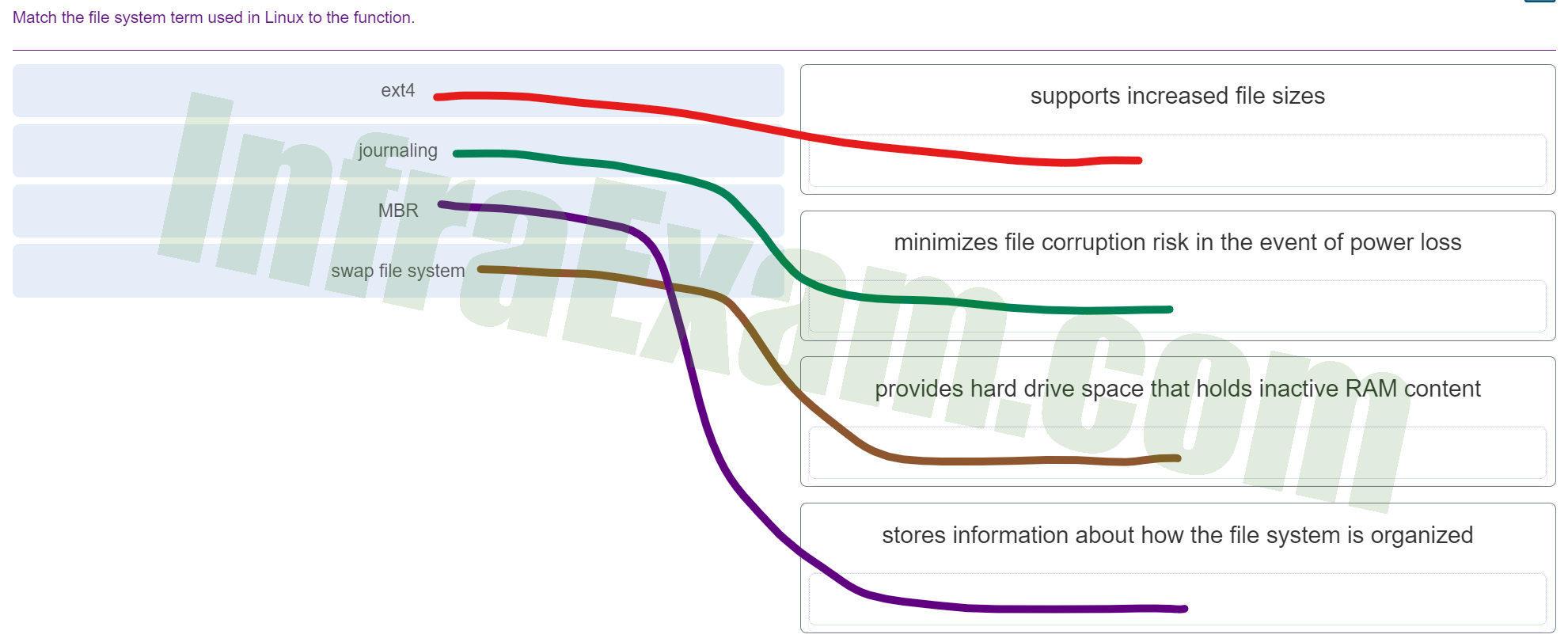|
Explanation & Hint:
- ext4: This is a widely-used journaling file system in Linux. It supports increased file sizes and has better performance and scalability than its predecessor ext3.
- Journaling: This is a feature used by file systems like ext3 and ext4 to minimize file corruption risk in the event of power loss or system crash. Journaling file systems record changes in a dedicated space on the disk before committing them to the main file system, which can help in recovering from an unexpected interruption.
- Swap file system: This doesn’t refer to a specific file system type but a space on a disk that a Linux system uses as virtual memory. It provides hard drive space to hold inactive RAM content. When the system runs out of physical RAM, less frequently used data can be ‘swapped’ out to the swap space on the disk.
- MBR (Master Boot Record): This is not a file system but a type of boot sector at the beginning of the storage device that contains information about how the logical partitions, containing file systems, are organized on that medium. The MBR also contains executable code to function as a loader for the installed operating system—typically by passing control to the loader’s second stage, or in conjunction with each partition’s Volume Boot Record.
|
